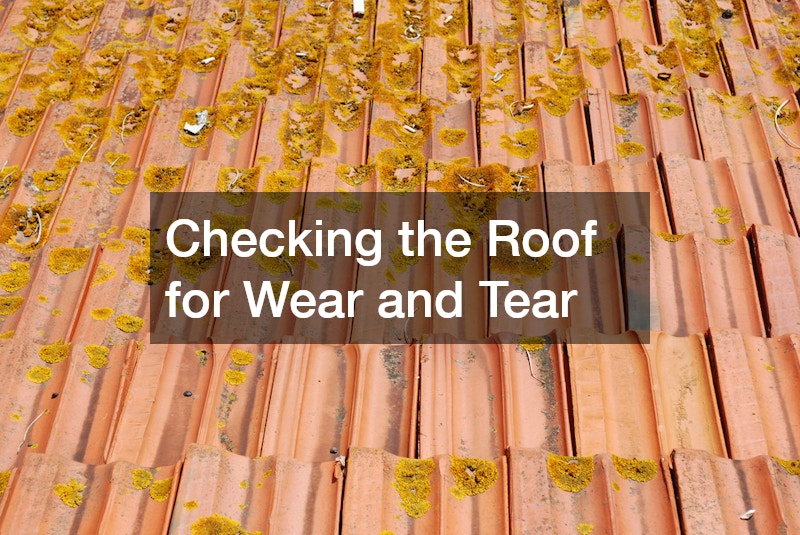Owning a home brings a sense of pride and accomplishment, but it also comes with the responsibility of proper upkeep. One of the most effective ways to ensure your home remains safe, efficient, and structurally sound is by conducting a yearly home inspection. Taking the time to review different areas of the property allows homeowners to identify small issues before they escalate into costly repairs. It also provides peace of mind, knowing that the house is being carefully maintained from top to bottom.
A yearly inspection should be seen as preventative care for your property. Just as you would visit a doctor for an annual check-up, your home benefits from consistent evaluations to catch early signs of wear and tear. By setting aside time to assess different systems and structures thoroughly, homeowners can protect their investment, avoid unexpected emergencies, and plan for necessary improvements. With consistent attention, even new homeowners can build confidence in maintaining their property and reducing long-term expenses.
Another benefit of a yearly home inspection is the opportunity to better understand how each system in the house functions together. For new homeowners, especially, taking the time to evaluate different areas not only highlights potential issues but also builds knowledge and confidence in managing property upkeep. This process turns what might feel overwhelming into a structured routine, helping owners stay organized and prepared throughout the year.
Checking the Roof for Wear and Tear

The roof is one of the most critical elements of a home, serving as the first line of defense against harsh weather conditions. During a yearly inspection, checking the roof for missing shingles, damaged flashing, or visible sagging can help prevent water leaks and structural issues. Since roofs are constantly exposed to sunlight, wind, and storms, even small imperfections can quickly develop into larger problems if not addressed promptly. Regular attention to the roof not only prolongs its lifespan but also protects the interior of the home from costly damage.
In some cases, visible signs of deterioration may signal the need for more serious intervention. For example, if extensive damage or widespread leaks are discovered, it may be time to consider roof replacement. A thorough inspection ensures that homeowners are aware of the current condition of their roofing system, allowing them to budget for repairs or upgrades before emergencies arise. By taking this proactive approach, new homeowners can avoid surprise expenses and keep their property well-protected year after year.
Inspecting Gutters and Downspouts
Gutters and downspouts play a vital role in managing rainwater and directing it away from the home’s foundation. During a yearly home inspection, it is important to ensure these systems are free from debris, clogs, or breaks that could cause water to back up. Neglecting this step can lead to water pooling near the house, resulting in basement leaks, soil erosion, or foundation cracks. Keeping gutters and downspouts in working order also prevents damage to siding, landscaping, and other exterior surfaces.
When inspecting these areas, it may be necessary to look for signs of improper drainage or hidden leaks that require professional assistance. In some cases, a plumber may be able to help identify and correct issues related to water flow around the property. Ensuring gutters and downspouts are securely attached and directing water away from the foundation is a simple but crucial step in protecting the long-term stability of a home. For new homeowners, making this inspection part of their annual routine helps prevent both structural and water-related damage over time.
Examining Windows and Doors for Leaks

Windows and doors are essential for maintaining a comfortable and energy-efficient home. As part of a yearly inspection, it is important to check for drafts, broken seals, or warping that may allow air or water to enter. Even minor leaks can significantly increase heating and cooling costs, as well as create uncomfortable living conditions. Inspecting the frames, caulking, and weather stripping ensures that your home remains properly sealed against the elements.
In cases where damage is too severe to repair, homeowners may need to consider window replacement as a long-term solution. Upgraded windows not only improve insulation but can also enhance security and overall appearance. During a yearly home inspection, identifying which windows or doors may need repairs versus replacement allows homeowners to make informed decisions about their property. This proactive approach helps prevent unnecessary energy loss and protects the home from water intrusion or structural deterioration.
Assessing the Foundation for Cracks
The foundation is the structural backbone of any home, making its inspection a top priority during a yearly inspection. Over time, shifting soil, temperature changes, and moisture can cause cracks or uneven settling in the foundation. Even small cracks may lead to larger problems, such as water seepage, structural instability, or interior damage to walls and flooring. A careful inspection helps homeowners catch these signs early and take the necessary steps to maintain the integrity of their property.
One specific issue to watch for is how foundation damage may impact interior features like hardwood flooring. If the foundation shifts or develops uneven spots, floors may begin to warp, squeak, or separate over time. During a yearly home inspection, examining both the foundation and the condition of the flooring can reveal important clues about potential problems. Addressing these issues promptly prevents minor foundation cracks from leading to expensive structural and interior repairs later on.
Testing Plumbing Systems for Issues

Plumbing is one of the most vital systems in any home, and it should always be carefully reviewed during a yearly inspection. Leaks, clogs, or corrosion in the pipes can lead to wasted water, higher utility bills, or even costly structural damage if water seeps into walls or floors. Inspecting visible pipes, checking water pressure, and ensuring drains flow properly are all important steps in maintaining a healthy plumbing system. Regular inspections also allow homeowners to spot early warning signs before they turn into emergencies.
In particular, water heating systems should not be overlooked, as they are essential for daily living. Issues such as inconsistent water temperature, strange noises, or signs of rust may indicate the need for water heater repair. By catching these problems during a yearly home inspection, homeowners can address them before a complete breakdown occurs. Keeping the plumbing system in good condition not only improves daily comfort but also helps protect the long-term value of the property.
Reviewing Electrical Panels and Outlets
Electrical systems are central to modern living, and ensuring their safety is a key part of any yearly inspection. Overloaded circuits, outdated wiring, and faulty outlets can all pose fire hazards if left unchecked. By examining the electrical panel, outlets, and visible wiring, homeowners can confirm that their system is functioning safely and efficiently. Regular inspections also provide reassurance that the home is up to current safety standards, protecting both the property and its occupants.
In addition to the panel and outlets, the condition of major appliances should also be considered, since they rely heavily on a safe and consistent power supply. For example, if an appliance like a stove is not operating correctly, it may point to larger electrical issues or even the need for oven repairs. A yearly home inspection helps identify whether problems originate in the electrical system itself or in the appliance. This careful attention not only ensures safety but also prolongs the life of essential household devices.
Evaluating Heating and Cooling Systems

Comfort within the home depends heavily on efficient heating and cooling systems, making them an essential part of a yearly inspection. Over time, filters can become clogged, ducts may develop leaks, and equipment can lose efficiency. Inspecting these systems ensures that they are clean, well-maintained, and capable of keeping the home comfortable throughout the year. Preventive care also reduces energy costs and extends the lifespan of the equipment.
If issues such as uneven heating, unusual noises, or frequent cycling are noticed during an inspection, it may be time to consider heating repairs. Addressing these concerns early prevents unexpected breakdowns during the colder months, when a functioning system is most needed. A yearly home inspection provides the perfect opportunity to evaluate performance and determine whether routine servicing or repairs are necessary. By staying proactive, homeowners can avoid discomfort and reduce the risk of costly emergency calls.
Inspecting Attics and Basements for Moisture
Attics and basements often reveal hidden issues that can impact the entire home. As part of a yearly inspection, these spaces should be checked for signs of excess moisture, mold, or pest activity. Dampness in these areas can compromise air quality, weaken structural materials, and lead to long-term problems if left untreated. By addressing these concerns promptly, homeowners can protect both their health and the structural integrity of the home.
In some cases, unusual moisture levels may be linked to lifestyle factors or external features, such as improperly drained outdoor equipment. For example, poor drainage around outdoor fixtures or recreational installations may create excess humidity indoors, much like the challenges faced in hot tub maintenance. Including attics and basements in a yearly inspection ensures that hidden areas are not overlooked, giving homeowners a full picture of potential risks and helping them take preventive measures before small issues grow into serious damage.
Checking Smoke and Carbon Monoxide Detectors
Home safety is a priority, and a yearly home inspection should always include testing smoke and carbon monoxide detectors. These devices provide critical warnings in emergencies, and their effectiveness depends on regular maintenance. Batteries should be replaced at least once a year, and detectors should be tested to confirm they are functioning properly. By making this a routine part of an inspection, homeowners can reduce the risk of undetected hazards and ensure their family is protected.
While detectors are often overlooked, they are just as essential as other safety features in the home. During a yearly inspection, testing each device and replacing outdated models provides peace of mind. Just as homeowners schedule specialized upkeep, such as garage door services, they should also prioritize safety devices that may not be in daily use but play a vital role during emergencies. Consistent attention to these details ensures the home remains a secure environment year after year.
Reviewing Exterior Surfaces for Damage
The exterior of a home is constantly exposed to the elements, making it crucial to review during a yearly home inspection. Siding, paint, and trim can wear down over time, leading to cracks, peeling, or gaps that allow water and pests inside. Checking these areas carefully helps prevent small surface problems from becoming structural concerns. Maintaining the home’s exterior also enhances curb appeal and protects the property’s overall value.
If homeowners notice issues such as fading, warping, or gaps in exterior surfaces, they should address them before further damage occurs. Just as they would call an air conditioning company to maintain indoor comfort, homeowners should take exterior upkeep seriously to preserve the integrity of their property. Including the outside of the home in a yearly inspection helps ensure it is as well-protected as the systems inside, providing long-term durability and peace of mind.
Ensuring Long-Term Protection Through Regular Inspections
A yearly home inspection is one of the most valuable habits a homeowner can adopt. By thoroughly reviewing the roof, gutters, windows, foundation, plumbing, electrical systems, and more, homeowners gain a clear understanding of their property’s condition. This proactive approach not only protects against costly surprises but also ensures the home remains safe, efficient, and comfortable. Regular inspections are a form of preventive care that safeguards the investment and preserves long-term value.
For new homeowners, making yearly inspections part of their routine builds confidence and provides a roadmap for responsible ownership. Identifying small issues before they become major repairs allows for smarter planning and better financial management. Whether it involves routine maintenance, timely repairs, or upgrades to improve efficiency, consistent inspections empower homeowners to take control of their property’s future. With dedication to this yearly practice, any home can remain strong, secure, and welcoming for years to come. Home inspection is about more than just preventing damage—it is about creating peace of mind and a sense of security in homeownership. Knowing that every part of the house has been reviewed allows homeowners to focus on enjoying their space instead of worrying about hidden problems.

